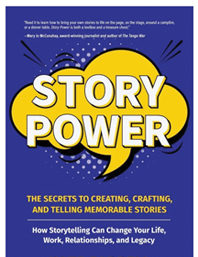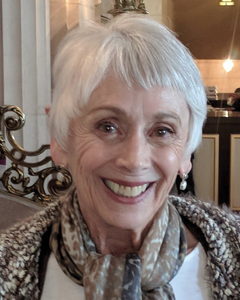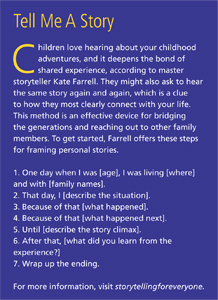
Telling stories can influence, teach and inspire and forges connections among people. “They speak a truth that you know, and they’re entertaining,” says Kate Farrell, a master storyteller and former librarian, who retired from Santa Rosa City Schools 12 years ago. “It’s why TED Talks are so powerful,” she says, though storytelling is mostly a lost art in the modern world. “We are more than ever connected by screens and devices—an unavoidable part of life,” she says. “But screen time has a downside for small children. We can lose that close personal connection needed for children to thrive.”
Farrell’s experience with storytelling began in the ’60s as an English teacher in San Francisco during a time of great racial tension. “It was a tense time, and I had an overcrowded classroom,” she recalls. All city schools were given the same reading assignments, regardless of skill level, and the book on the roster that day was a Greek myth. “My students couldn’t read the book, so I had to read it aloud,” she says. Partway through, she realized her classroom was restless and bored, and Farrell found the material as uninteresting as they did, so she set the book down. “I began to tell the story in my own words, and suddenly I knew I had them in the palm of my hand. We were seeing the story together, and I had their complete attention. I realized I’d stumbled onto something powerful—that I could connect in a personal creative way.”
She eventually left teaching and attended library school at the University of California, Berkeley. There, she found that librarians learn storytelling. “They preserved the art of storytelling as a professional tool,” she says. “In the ’70s, it made a comeback, along with folk songs and festivals in the Bay Area, and became a hot trend. Because there was a resurgence, I was able to leverage it into schools and into the community.”

For Farrell, storytelling became a passion project. She received a grant to develop a training program for teachers, and the program was picked up county by county throughout the state in the late ’80s. “It became a creative, exciting, multicultural grassroots kind of project,” says Farrell. Later, the program made its way to New York, where many of the ideas were published by Scholastic and Highlights for Children.
In the years that followed, the art of storytelling again faded into the background, but Farrell still teaches techniques through a blog on her website, storytellingforeveryone.net. Look for blog posts under “Family Storytelling.” Her book, Story Power, was recently published and is available on Amazon.
“Storytelling as an early childhood practice has not received support in our country,” says Farrell. In the mid-‘90s, early reading was encouraged in schools. It’s a bias in the language arts instruction, but being literate begins with speaking and listening. “Oral language and literature-based learning is no longer taught in early childhood, but telling stories helps young children learn how to listen. That’s the key to comprehension.”
As families spend more time at home during the pandemic, oral storytelling is a good way for parents to help foster creativity and improve listening skills and comprehension. “Because it’s not a book, and it’s not a screen. There’s nothing to look at,” she says. “Children are visualizing the characters and action, using their imaginations.”
Perhaps even more important, it gives parents and other family members the opportunity to share the stories from their family’s culture or history. “If parents know a story from their culture, it’s a wonderful story to tell,” says Farrell. “And a powerful literary tradition.”

Author
-

Karen Hart is the editor of NorthBay biz magazine, keeping her finger on the pulse of the North Bay, directing content and leading day-to-day operations of the editorial team. An award-winning writer, Karen brings more than 30 years of experience to the position. She is a member of the California Writers Club, and serves on the Journalism Advisory Council at Santa Rosa Junior College. She moved to Sonoma County in 2000, and she’s here to stay.
View all posts



